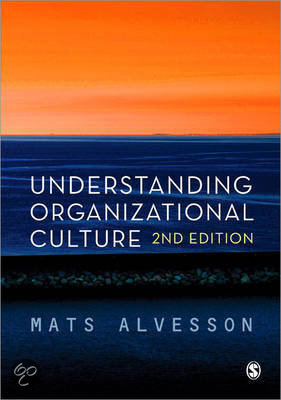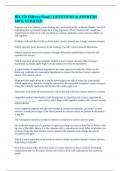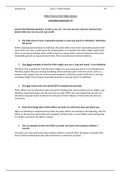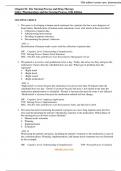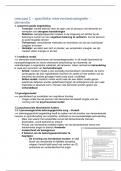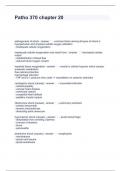Mats Alvesson (2nd edition)
Contents
Chapter 1: The concept of organizational culture p. 3
1.1 The meanings of culture p. 3
1.2 Key concepts of culture: symbols and meanings p. 4
1.3 What culture is not p. 5
1.4 The broad relevance of a cultural perspective p. 5
1.5 Some comments on the contemporary interest in organizational culture p. 5
1.6 Cognitive interests p. 6
1.7 Objectives of this book p. 7
Chapter 2: Culture as a metaphor and metaphors for culture p. 9
2.1 The metaphor concept p. 9
2.2 Metaphors in social science – advantages and problems p. 9
2.3 Culture as critical variable versus culture as root metaphor p. 10
2.4 Metaphors for culture p. 12
Chapter 3: Organizational culture and identity p. 15
3.1 Organization and identity p. 15
3.2 Exploring organizational identity: case studies of four consulting firms p. 16
Chapter 4: Organizational culture and performance p. 18
4.1 The dominance of instrumental values p. 18
4.2 Approaches to the culture – performance relationship p. 19
4.3 The culture – performance relationship p. 21
4.4 Positive and less positive outcomes of corporate culture: a case study p. 21
4.5 The ambiguity of performance: blame time and milking p. 23
Chapter 5: Organizational culture, strategy and marketing p. 24
5.1 Organizational culture and the business concept p. 24
5.2 Corporate strategy p. 24
Chapter 6: Organizational culture and leadership p. 27
6.1 What is leadership? p. 27
6.2 Varieties of leadership p. 27
6.3 A case of initiator-leadership and follower-leadership p. 29
Chapter 7: Work and multiple levels of culture p. 30
7.1 The appeal of ‘pure’ symbolism uncoupled from material practice p. 30
7.2 Taking work and social interaction into account p. 30
7.3 A modest proposal for a redirection of cultural understanding p. 31
7.4 Conceptualizations of culture in terms of social level p. 32
1
,Chapter 8: Ambiguity of culture p. 34
8.1 Ambiguity and contradiction: a plurality of values and commitments p. 34
8.2 Multiplicity and bounded ambiguity p. 35
Chapter 9: Culture as a constraint: an emancipatory approach p. 37
9.1 Culture as a counterforce to variation and autonomy p. 37
9.2 Culture and power p. 37
9.3 Culture as a source of taken-for-granted assumptions p. 39
9.4 Gender and organizational culture p. 39
9.5 Ethical closure in organizations p. 40
9.6 Corporate culture and closure at Pepsi Cola p. 41
Chapter 10: Cultural change p. 43
10.1 Against the trivialization of ‘managing culture’ p. 43
10.2 Managing culture p. 43
10.3 Organizational culture change as a grand project, organic movement or the
reframing of everyday life? p. 43
10.4 Working with change p. 45
2
,Chapter 1: The concept of organizational culture
Organizational culture is one of the most major issues in academic research and education,
because the cultural dimension is central in all aspects of organizational life. How people in a
company think, feel, value and act is guided by ideas, meanings and beliefs of a cultural
(socially shared) nature. A key concern is that ‘culture management aspires1 to intervene in
and regulate being, so that there is no distance between individual’s purposes and those of
the organization for which they work’.
There is, however, often a lack of a deeper understanding of how people and organizations
function in terms of culture. The interest in quick-fixes in much management writing and
thinking is unhelpful. Instead a well-elaborated framework and a vocabulary in which core
concepts – culture, meaning, symbolism – are sorted out is necessary for understanding and
for qualified organizational practice by consultants, managers and others.
Culture is thus highly significant for how companies and other organizations function: from
strategic change to everyday leadership and how managers and employees relate to and
interact with customers, as well as to how knowledge is created, shared, maintained and
utilized.
Alvesson’s major point is not, however, to preach culture as the principal means to corporate
effectiveness, growth and success. Nor is his interest to offer new recipes for effective
management of culture. For him, organizational culture is significant as a way of
understanding organizational life in all its richness and variations. The centrality of the culture
concept follows from the profound importance of shared meanings that are shared to various
degrees. A sense of common, taken-for-granted ideas, beliefs and meanings is necessary for
continuing organized activity.
The meanings of culture
‘Culture’ has no fixed or broadly agreed meaning even in anthropology, but variation in its
use is especially noticeable in the literature on organizational culture. The concept of culture
seems to lend itself to very different uses as collectively shared forms of, for example, ideas
and cognition, as symbols and meanings, as values and ideologies, as rules and norms etc.,
all of which may be targets of study.
Frequently ‘culture’ seems to refer to little more than a social pattern. Many people referring
to culture seem to do so in a very vague way, and it is important to use the concept without
losing focus, direction and interpretive depth.
Most of the diverse perspectives surveyed here share the following assumptions about
cultural phenomena:
- They are related to history and tradition;
- They have some depth, are difficult to grasp and account for, and must be interpreted;
- They are collective and shared by members of groups;
- They are primarily ideational in character, having to do with meanings,
understandings, beliefs, knowledge and other intangibles2;
1 Streeft ernaar
3
, - They are holistic, intersubjective and emotional rather than strictly rational and
analytical.
Alvesson agrees with Frost et al.’s definition of organizational culture: ‘Talking about
organizational culture seems to mean talking about the importance for people of symbolism –
of rituals, myths, stories and legends – and about the interpretation of events, ideas, and
experiences that are influenced and shaped by the groups within which they live.’ Alvesson
will also include values and assumptions about social reality, but values are for him less
central and less useful than meanings and symbolism in cultural analysis.
Culture is not primarily ‘inside’ people’s heads, but somewhere ‘between’ the heads of a
group of people where symbols and meanings are publicly expressed – in work group
interactions, in board meetings, but also in material objects. It is the meaning aspect of what
is being socially expressed and it is thus visible at the same time.
Culture is best understood as emergent, dynamic, situationally adaptive and co-created in
dialogue. There is, for example, no static and uniform meaning of ‘managerial authority’ in a
workplace; the cultural context provides a framework for its negotiation, aiding interactions.
Key concepts of culture: symbols and meanings
Alvesson sees symbols and meanings as the most significant concepts for a cultural
understanding. Meaning refers to how an object or an utterance3 is interpreted. It points at
what something is seen as standing for. Meaning has a subjective referent in the sense that it
appeals to an expectation, a way of relating to things. Meaning makes an object relevant and
meaningful. In a cultural context, it is socially shared and not personally idiosyncratic4
meanings that are of interest. An exact meaning of a rule calls for interpretation – and that is
where culture comes in,
A rule differs in how strictly and uniformly it is interpreted and taken seriously owing to the
cultural context giving the rule its exact meaning. We can imagine different meanings and
thus leads to different behaviours and consequences of the rule. But also within one and the
same culture the situation-specific and dynamic element needs to be considered. Even in a
rule-focused culture there are situation-specific efforts to sort out when it is good to rely on
well-established structures and when one should avoid mindless rigidity5.
In a cultural context it is always socially shared meanings that are of interest, not so much
highly personal meanings. A cultural understanding concentrates not on individual
idiosyncrasies: it is the shared orientations within an organization or another group that is of
interest.
2 Immateriële activa
3 Uiting
4 Eigenaardig
5 Stijfheid
4


